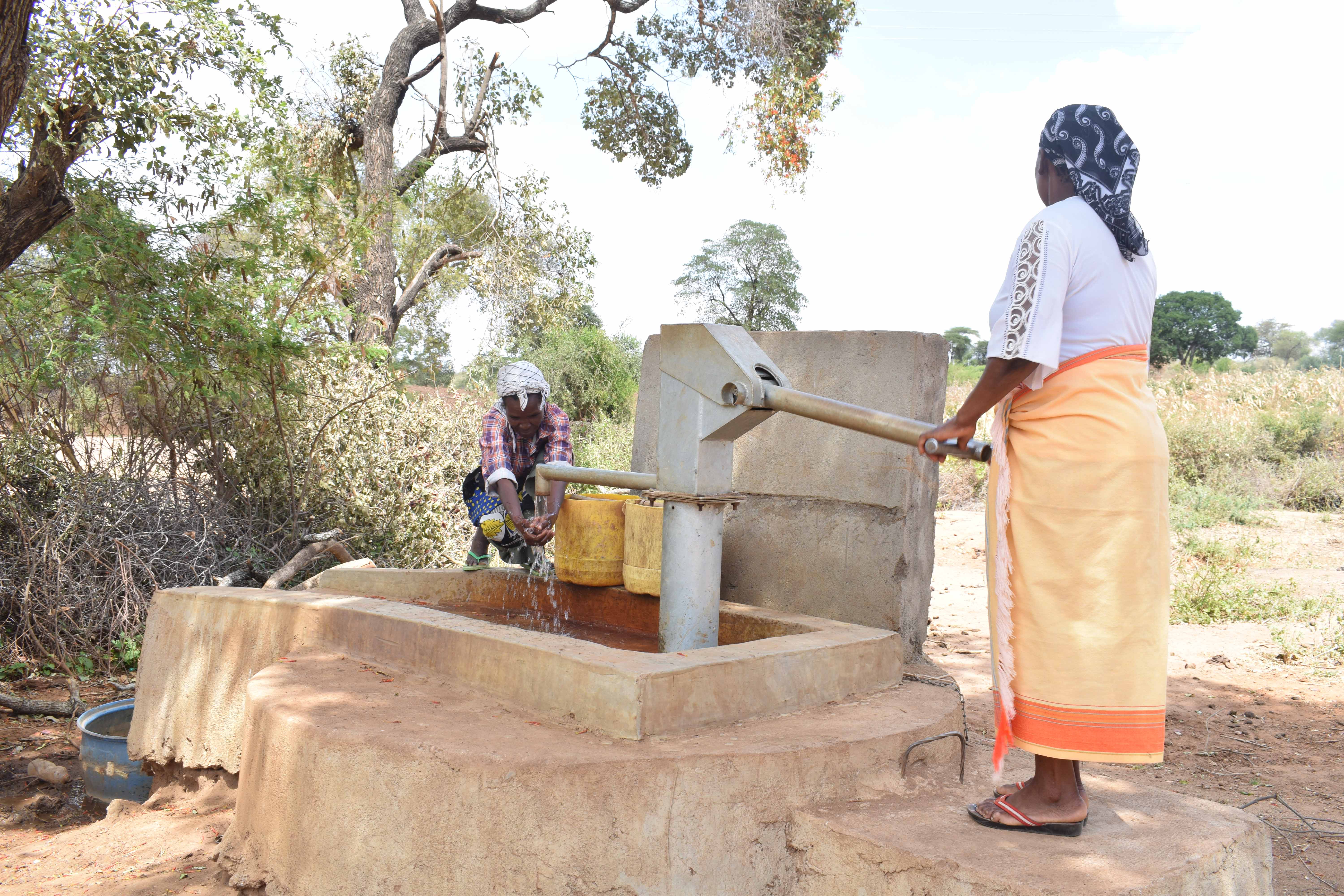This project is a part of our shared program with Africa Sand Dam Foundation. Our team is pleased to directly share the below report (edited for clarity, as needed).
Welcome to the Community
Tei wa Nzung'u Self-Help Group lives in the upper area of southeastern Kenya. This area is regarded as the driest of Kitui County with little to no rainfall. Kitui temperatures range from 14 to 34C (57 to 93F), with July the coldest month and September the hottest.
Because of a lack of rainfall, there are limited water sources. There are seasonal rivers that form after a bout of rain, but quickly dry up after. The Athi River and Tana River are the only main rivers in the entire county, and form the borders for that area.
There are cultural practices that persist rather than progress; women are still not allowed to make decisions without the approval of men here. Tei wa Nzung'u Self-Help Group was formed with the goals of not only addressing water scarcity in the community, but of countering this retrogressive structure. Most of the members of the group are women who rely on farming as their main source of income.
This area has a huge population of 880 people from dozens of different households. (Editor's Note: While this many people may have access on any given day, realistically a single water source can only support a population of 350-500 people. That's why it's so great that this community has agreed to a five year plan to build more sand dams and hand-dug wells. To learn more, click here.)
Water Situation
The Kamuwongo River is the seasonal source closest to this community. There is also an unprotected spring. Still, these sources are quite a distance away, forcing women and children to spend an average of four to six hours a day fetching water. There isn't a safe water access point at the river either, so scoop holes are dug along the river channel to get to hit the water table underneath.
20-liter jerrycans are used for fetching water, and are carried back home. Once home, water is dumped into a larger, 200 to 400-liter plastic container for storage.
A lot of time is wasted on water, making the community sacrifice many income-generating activities.
Sanitation Situation
A little more than half of homes in this area have a pit latrine. They are both shallow and poorly constructed. We met one of the women from the self-help group, Priscah Muteti. She said, "Having a good toilet is a luxury many cannot afford. Many still use the bush to relieve themselves. We are now learning that will increase diseases among the population." You can see Priscah Muteti and her household under the "See Photos & Video" tab below.
We couldn't find any helpful hygiene and sanitation tools like dish racks, clotheslines, or hand-washing stations. Garbage is sorted between biodegradable and not, so that compost can be fed to animals and fertilize farms. Excess non-biodegradable is often burned.
Plans: Hygiene and Sanitation Training
To address the concerns above, hygiene and sanitation training will be offered to self-help group members on two consecutive days. Once the members have learned about useful practices and tools to improve health, they will be able to share with their families and neighbors. Since open defecation is an issue, an emphasis will be placed on latrine construction and use.
Plans: Sand Dam
This sand dam will be one of many construction projects to come in the next few years. We will spend a total of five years unified with this community to address the water shortage. More sand dams will be built to transform the environment. As the sand dam matures and builds up more sand, the water table will rise. Along with these sand dams, hand-dug wells will be installed to give locals a good, safe way to access that water.
This particular sand dam is projected to be 51.6 meters long and 4.38 meters high. The community has agreed that this is the best place to begin building; there are no property owners to interfere, and there is also good bedrock and a sand bank which will maximize water conservation behind the dam.
The members are ready and willing to contribute the local materials needed to begin construction, including sand, stones, and ballast. Once our artisans arrive, they are prepared to offer their time and strength to get this sand dam done right.
It is the girl child who will most benefit from a sand dam. She often misses school in order to help her parents fetch water. She also misses school because of hygiene-related challenges that result from a water shortage. With a new sand dam closer to home, less time will be wasted for fetching water. As the sand dam matures, there will also be enough water to use for personal hygiene and domestic chores, let alone enough to drink!
A hand-dug well is also scheduled to be installed adjacent to the sand dam, which will give people a safe way to fetch drinking water (click here to view that project).



 Rehabilitation Project
Rehabilitation Project
























